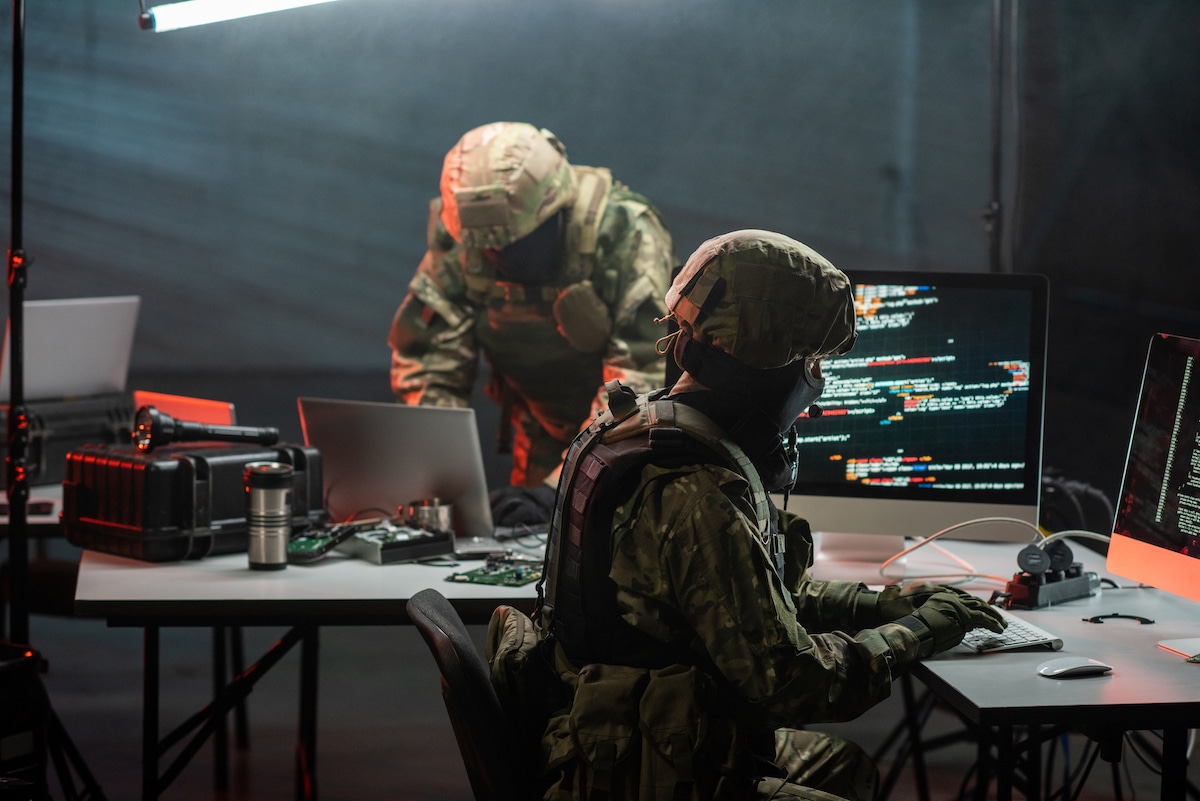Anatomy of Wartime Cyberattacks

Cyberattacks during wartime have become a potent weapon, affecting the warring nations and regular citizens worldwide. Such shifts in cyber threats highlight the interconnected nature of our digital world, where geopolitical events in one region can have digital repercussions across the globe. A recent example underscores this global reach: the Israel-Hamas conflict has increased cyber threats even in seemingly unrelated countries like Australia. With this evolving landscape of digital warfare, it’s crucial to understand the various cyberattacks that emerge during conflicts and their potential impacts.
DoS Attacks: More Than Just Wartime Cyberattacks
Denial of Service (DoS) attacks aim to incapacitate systems vital for offensive and defensive measures. By targeting infrastructure and applications that fortify and defend, attackers can effectively blind these systems, potentially masking a physical assault. Critical systems, whether for gathering intelligence, executing attacks, or facilitating communication, can be interrupted, severely limiting or preventing retaliation. Within hours of Hamas rockets entering Israel, DoS attacks started to spring up on Palestinian and Israeli sites, including nearly 3 dozen directed at Israeli government pages.
While the average individual might not directly encounter these cyberattacks, the implications for businesses are profound. Software and hardware companies supplying defense contracts should be proactive, anticipating the need for patching vulnerabilities and assisting in recovery and restoration efforts. Alarmingly, attackers might even compromise these defense-related companies well before conflicts arise, scouting for weaknesses to exploit.
Propaganda and False Information: Manipulating the Masses
In the age of information, controlling the narrative is a powerful tool. The compromise of news websites, especially during conflict, can significantly sway public perception. With awareness of this power, attackers employ various tactics to manipulate the masses. By attempting to swing the narrative in their favor, they can elicit support for a different side or even exaggerate the gravity of situations to create panic or confusion. This deception is not just about spreading false information but crafting a storyline that serves their agenda.
Unless you’re directly involved in the security of these news organizations, you’re likely a consumer of the information they provide. In such a scenario, how do you discern fact from fiction? The key lies in diversification. It’s crucial to cross-reference information, seeking out multiple sources before placing trust in a single outlet. Doing so gives you a more holistic view of events and safeguards yourself against falling prey to one-sided narratives.
Moreover, in this era of digital news, consider revisiting traditional forms of journalism, such as newspapers and magazines, which often undergo rigorous editorial processes.
Deep Fakes & AI: The New Face of Deception
With advancements in deep fake technology and AI, it’s become alarmingly easy to fabricate convincing audio and video. Deep fake technology uses advanced machine learning algorithms to craft realistic yet entirely fabricated content. The possibilities are endless and frightening, from altering speeches to manipulating facial expressions. Imagine a scenario where a video surfaces online showing a nation’s leader declaring war, admitting to crimes or even expressing sympathy for the opposition.
But it’s not just about political figures. Ordinary citizens can also become targets. From creating defamatory content to blackmail, the personal repercussions of deep fakes can be devastating.
In a world where seeing once meant believing, we now find ourselves questioning the authenticity of everything we view.
So, how can one navigate this treacherous digital landscape?
- Consider the source. Is the content coming from a reputable outlet?
- Look for corroborating evidence. Are other trusted sources reporting the same news?
- Stay informed. Tools and platforms that detect deep fakes are also emerging and can offer additional protection.
Phishing & Financial Scams: Exploiting the Heartstrings During Wartime
War, with its devastating images and heart-wrenching stories, naturally evokes a strong emotional response. Always looking for vulnerabilities, scammers recognize this emotional state as an opportunity. Malicious actors deceive people by pretending to be charitable organizations or creating stories of suffering and need.
You might receive an email detailing the plight of war victims, complete with poignant images and a call to action. Or a message on social media from a seemingly reputable organization urging immediate donations to help those in need. While the instinct to help is commendable, pausing and evaluating is crucial. With awareness and caution, one can avoid falling into these traps.
Before making any donations, always verify the legitimacy of the organization. It is important to take simple steps such as checking official websites, reading reviews, and examining an organization’s records. Be especially wary of unsolicited requests for funds, no matter how genuine they seem. Remember, legitimate organizations rarely, if ever, resort to aggressive or emotionally manipulative tactics.
Supply Chain Interruption: The Global Domino Effect
Disrupting the supply chain can deliver a significant advantage in wartime. Whether it’s the agricultural sector ensuring food supplies, the energy sector providing fuel, or the industries engaged in arms manufacturing and defense technology, no area is immune. The objective is clear: weaken the opposition by cutting off resources.
However, the ramifications of such attacks extend far beyond the immediate conflict. In our interconnected global economy, disruptions in one region can ripple across industries, economies and livelihoods worldwide. For instance, a cyberattack on an oil refinery could lead to fuel shortages, escalating prices and transportation disruptions across continents.
For global citizens and businesses, this presents a dual threat. On the one hand, there’s the direct risk of being targeted in cyberattacks aimed at weakening specific supply chain elements. On the other, there’s the indirect impact. As supply chains falter, essential commodities can become scarce, leading to increased living costs, shortages of items and even socio-economic unrest.
Navigating this complex scenario requires a multi-faceted approach. Governments and industries must collaborate to fortify their digital and physical infrastructures. Regular audits, cybersecurity training, and international cooperation can help mitigate risks. It’s a wake-up call for individuals to understand the vulnerabilities inherent in our globalized system. Being informed, prepared and adaptable can help reduce supply chain challenges.
Wartime Cyberattacks: Safeguarding Yourself with a Trusted Partner
The digital warfare landscape is vast and ever-evolving, impacting not just nations in conflict but resonating globally. Economies, societies, businesses and individual lives are intertwined, making the consequences of digital threats far-reaching. As we move forward, we must recognize the magnitude of these challenges and the importance of staying informed.
Awareness, vigilance, and proactive measures are not just buzzwords; they are necessities in this digital age. By understanding the threats and taking timely actions, we can safeguard our digital assets and ensure a more secure future for all.
OneNeck offers cutting-edge cybersecurity solutions tailored to your needs. Having a trusted partner can make all the difference in challenging times.
Contact us today for a comprehensive cybersecurity assessment and fortify your digital defenses.
Additional Resources:




